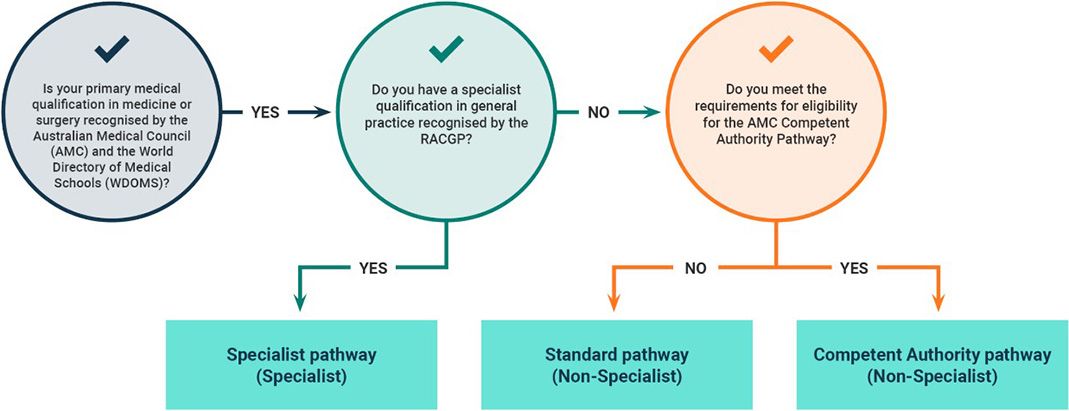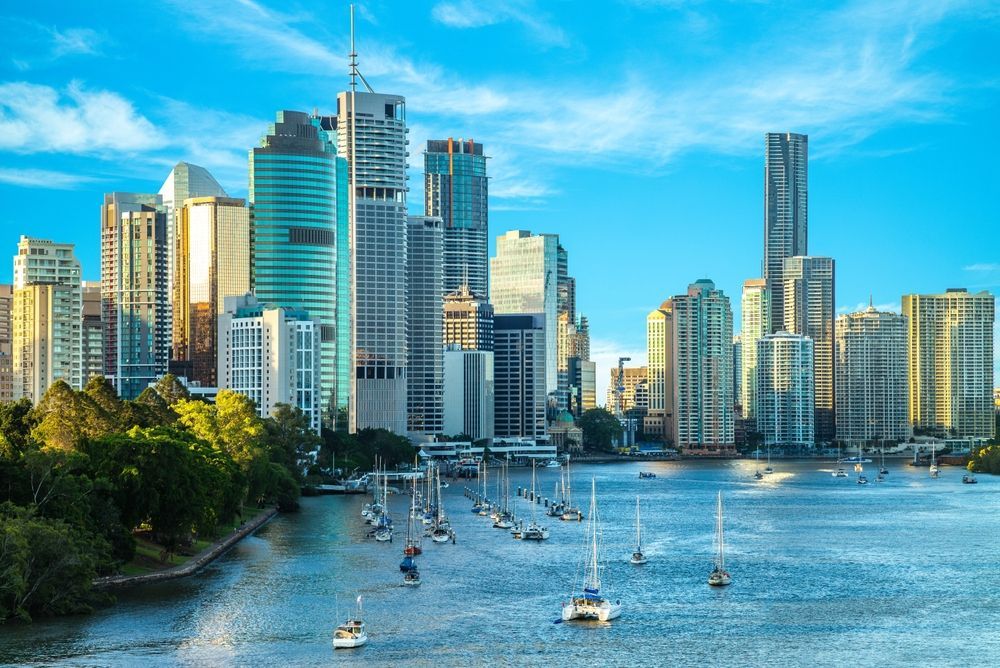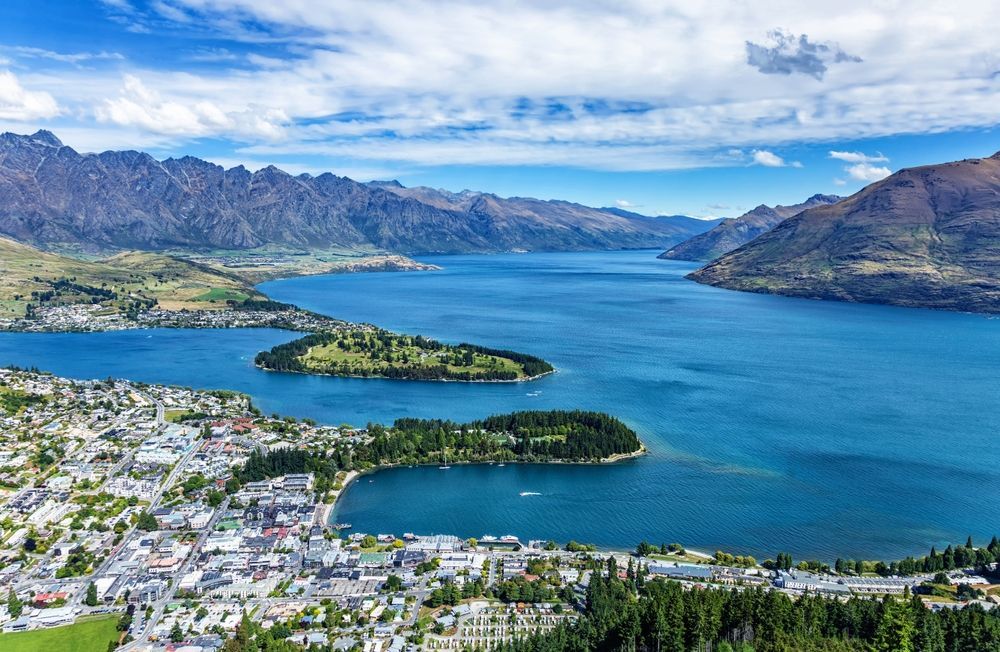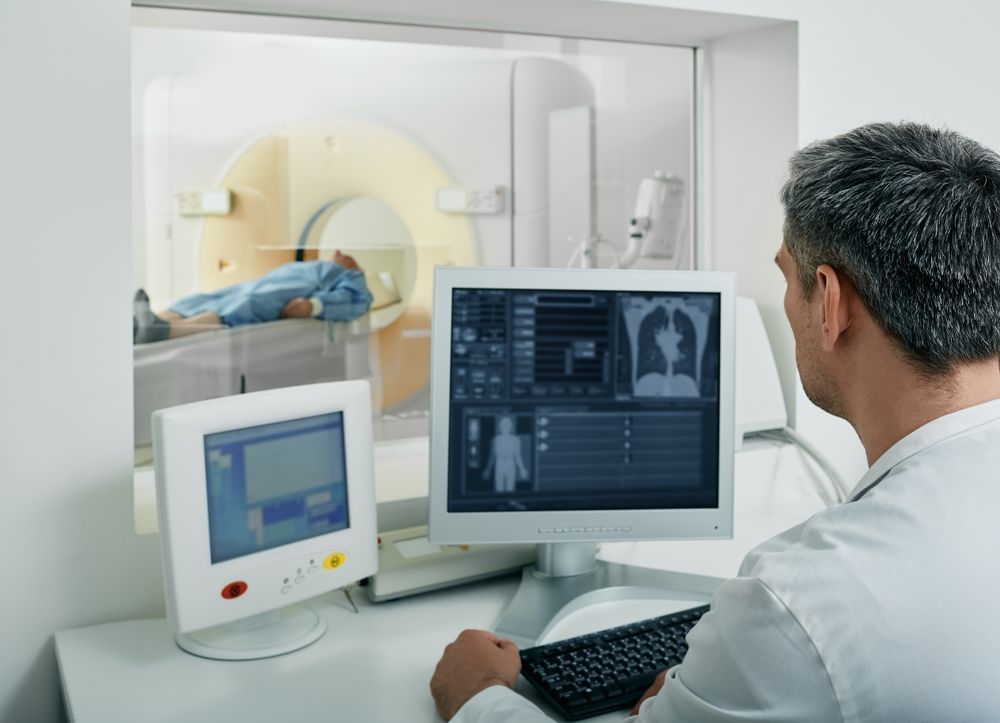Work as a GP in Australia: Registration, Visas, and Pathways Explained
Australia is one of the most popular destinations for General Practitioners (GPs) from the Anglosphere countries of the UK, Ireland, Canada, and USA, as well as other countries of the world. With attractive earning potential, a high demand for family physicians, and the promise of an enviable lifestyle, it is not surprising that so many doctors are drawn to make the move. Yet, the pathway from being a qualified GP abroad to becoming a practising doctor in Australia can appear complex. This article provides a detailed overview of the registration, visa, and employment processes you need to understand before starting your Australian GP career.
Why Australia Needs International GPs
Australia has long relied upon overseas trained doctors to provide essential healthcare, particularly in the rural and remote areas of this vast country. Despite the country’s efforts to train more local GPs, demand continues to outstrip supply. This demand is strongest outside the major cities, where practices often offer attractive financial packages, relocation support, and visa sponsorship to attract good international candidates.
International medical graduates (IMGs) represent a large portion of the GP workforce and are essential for filling service gaps caused by an aging domestic workforce and a high concentration of Australian-trained doctors in the major cities.
Key factors driving the need for international GPs
Uneven distribution of primary care doctors
Australia's vast geography and uneven population density, whereby most of the population is clustered around the eastern coast of the country, has attracted the majority of Australian trained doctors to work in the metropolitan areas, where they have access to tertiary and secondary hospitals, specialist physicians for ease of referral and a larger population base.
This results in a severe shortage of general practitioners in the rural and remote communities, some of which are on the outskirts of the major cities. The government uses visa requirements and incentives to encourage international GPs to work in these underserved "Distribution Priority Areas" for a number of years, directly addressing the regional workforce imbalance.
Aging GP workforce and retirement
The current general practitioner workforce in Australia is aging, with a higher proportion of GPs aged over 55 compared with other medical specialties. As these doctors retire, they leave a gap which cannot be easily filled by domestic graduates alone. International doctors are therefore vital for filling these positions and ensuring continuity of care for patients.
Medical student preferences
Despite an increase in the number of medical graduates, fewer freshly qualified Australian doctors are choosing general practice as their career, favouring the secondary specialities of hospital medicine instead. The combination of aging GPs approaching retirement with a diminishing number of new entrants to the field has created a shrinking domestic GP pool, with opportunities for international general practitioners to seize. Indeed international recruits are essential to sustain the primary care medical services.
Increasing demand for primary care medical services
The population of Australia is aging and exhibits a high prevalence of the acute and chronic diseases associated with advancing years, placing extra demands on the primary care services. The existing workforce is not sufficient to manage these growing needs. Projections indicate that the GP shortfall will continue to worsen if these trends persist without a substantial increase in staffing from both domestic and international sources.
Step 1: Obtain Registration with the Medical Board of Australia
If you are considering a career in Australian general practice, the first step is to determine your eligibility for a licence to practice in the appropriate category. The Medical Board of Australia (MBA) is the sole national professional regulatory agency with offices in each state and territory. It registers physicians and develops standards, codes and guidelines for the profession. All doctors in Australia must hold registration with the MBA. The Australian Health Practitioner Regulation Agency (AHPRA) issues practising licenses for all MBA registered doctors in active medical practice.
International Medical Graduates (IMG) seeking registration to practise as general practitioners in Australia, have three pathway options. The choice of appropriate pathway depends upon the origin of the primary medical degree and specialist qualification in general practice.
Knowledge and clinical skills will be assessed through one of the following registration pathways:
- Standard pathway
- Competent Authority pathway
- Specialist pathway.
To identify the correct pathway, it is important to check
- If the basic medical degree training is recognised by the Australian Medical Council (AMC) and the World Directory of Medical Schools (WDOMS).
- If the specialist qualification is recognized by the Royal Australian College of General Practitioners (RACGP) This can be verified against the list of approved qualifications on the PEP Specialist website.
Select A Registration Pathway

The Specialist Pathway (via RACGP or ACRRM or PEP SP)
The specialist pathway to AMB and AHPRA registration is suitable for two categories of GP: those who have undergone training via the Australian General Practice Training Program (AGPT) and hold the Fellowship of the Royal Australian College of General Practitioners (FRACGP) or Fellowship of the Australian College of Rural and Remote Medicine (FACRRM) and for specialist international medical graduates (SIMGs) who are eligible for entry to the RACGP Practice Experience Program Specialist (PEP SP).
The PEP Specialist is a self-directed six-month education program complemented by workplace-based assessments. Generally, participants are required to work in practices in DPA MM2-MM7 locations. Supervision is required until the awarding of RACGP Fellowship, after which GPs are granted full specialist registration and permitted to work unsupervised across Australia. Specialist registration allows access to Medicare rebates at the same rate as Australian-trained GPs.
Qualification for the Practice Experience Program Specialist (PEP SP)
The Practice Experience Program Specialist (PEP SP) is for Specialist Medical Graduates (SIMGs) who hold a recognised overseas general practice specialist qualification and wish to qualify for specialist registration in Australia and be admitted to Fellowship of the RACGP (FRACGP) via the Medical Board of Australia's (MBA) Specialist Pathway - specialist recognition.
Entry to this program consists of three steps: assessment of specialist qualification, approval of a job offer and approval of the right to work in Australia.
1. Qualification Comparability Assessment
The process begins with an application for a comparability assessment by the RACGP which has a list of qualifications approved for the PEP SP program and a second list of disapproved qualifications. If your qualification is not on either list, you may apply to have a curriculum comparison assessment. At the end of this process your qualification will be approved or disapproved and added to the appropriate list.
Based on the assessment of your overseas training, qualifications, and experience, you will be deemed either:
- Eligible for the PEP SP Program: you may proceed to have a job offer approved, demonstrate the right to work and then sign the PEP SP agreement and start work
- Ineligible for the PEP SP Program: you will not be eligible for specialist registration but may be able to enter the Fellowship Support Program (FSP) which is a self-funded education and training program to support doctors with general practice experience on their journey to Fellowship. It includes self-directed learning, in-practice learning, and workplace-based assessments (WBAs) for feedback and progress monitoring. Registrars work in accredited training practices under supervision. This can be entered with general registration acquired under the competent authority or standard pathways.
2. Job offer
You must secure a suitable job offer in an approved general practice. The RACGP must approve this placement.
3: Australian Health Practitioner Regulation Agency (AHPRA) registration
After a successful comparability assessment, the RACGP will upload its report to the Australian Medical Council (AMC) portal. You can then apply to AHPRA for provisional specialist medical registration.
4: Right to Work in Australia
You must hold an appropriate visa which allows you to work in the GP position if not an Australian citizen or resident.
5. Medicare access: The RACGP and employing medical clinic assists with the application for a Medicare provider number, which is necessary for billing patients for services.
The AHPRA Expedited Specialist Pathway
The AHPRA Expedited Specialist Pathway offers a fast-tracked route to specialist registration for eligible general practitioners (GPs) who have trained in comparable health systems, such as those in the UK, Ireland, and New Zealand. Launched by the Medical Board of Australia, this pathway removes the need for a full assessment by an Australian specialist college, significantly reducing the cost and time it takes for qualified GPs to begin practising in Australia.
Eligibility and Features
Eligibility for this fast track route to specialist registration and entry to the PEP SP requires a primary medical qualification (AMC and WDOMS approved) and a specialist qualification from an approved country. As of October 21, 2024, the accepted GP qualifications include specific certifications from the UK, Ireland, and New Zealand.
Eligible GPs apply directly to the AHPRA/Medical Board of Australia. While this pathway leads to specialist registration equivalent to a Fellow, it does not automatically grant Fellowship of the RACGP and GPs must enter the PEP SP program for 6 months. Post-registration requirements include completing six months of supervised practice, an orientation to the Australian health system, and cultural safety education.
Application Process
The application process involves verifying qualifications, securing a GP position with a supervisor, and submitting an application through the AHPRA portal. The AHPRA grants provisional registration with conditions. Full specialist registration can be applied for after satisfactorily completing the required supervision and training.
The Competent Authority Pathway
This pathway to provisional general registration is suitable for medical graduates from the UK, Ireland, USA or Canada and graduates from other AMB and WDOMS recognised medical schools who have passed a qualifying exam (PLAB, USMLS 1-3, MCCQE1) and have at least one years practice experience in UK, Ireland, Canada or USA.
The Standard Pathway
This is the pathway to provisional general registration for all doctors ineligible for the specialist or competent authority pathways. The Australian Medical Council (AMC) Part 1 MCQ exam must be passed.
Step 2: Visa and Immigration Options
If not an Australian citizen or permanent resident, you will require a visa to work as a GP in Australia. Your primary visa options are the employer-sponsored Skills in Demand (SID) visa, valid for up to 4 years or various permanent skilled visas. A key requirement for all pathways is obtaining registration with the Medical Board of Australia.
Skills in Demand (SID) visa (Temporary)
This is the most common temporary visa for general practitioners moving to Australia and requires sponsorship from an approved Australian employer. This new employer-sponsored visa is available for occupations on the Core Skills in Demand list, which includes GPs.
- Duration: Initial grant for four years, with a pathway to permanent residency after working for an approved employer for two years.
- Processing Time: Expedited processing within 4 weeks.
- Flexibility: Provides 180 days to find a new employer if you switch roles.
- Eligibility: No age limit for GPs
- Family entry: family members can accompany the visa holder
Application process
The application process is completed online in three stages and can be lodged simultaneously.
- Sponsorship application: The employer submits an application to become an approved Standard Business Sponsor.
- Nomination application: The employer nominates the doctor for a specific position.
- Visa application: The doctor and any family members apply for the visa.
Permanent visas
Several permanent visa options are available for general practitioners, either with or without sponsorship by an employer. All require evidence of eligibility for registration with the Australian Medical Board. English language proficiency is also necessary. Some visas may require GPs to work in designated Distribution Priority Areas (DPAs), often in regional Australia.
The Employer Nomination Scheme (ENS) Visa (Subclass 186)
The Employer Nomination Scheme (ENS) Visa (Subclass 186)is an Australian permanent residency visa for skilled foreign workers who are nominated by an eligible Australian employer. The visa allows the applicant and any included family members to live, work, and study in Australia indefinitely.
Visa streams
The Subclass 186 visa has three streams, each with different eligibility criteria:
- Temporary Residence Transition (TRT) stream: For applicants who hold a Temporary Skill Shortage (Subclass 482) or Temporary Work (Skilled) (Subclass 457) visa and have worked for their nominating employer for at least three years.
- Direct Entry (DE) stream: For applicants who have been nominated by an employer but do not qualify under the TRT stream. You must have at least three years of relevant work experience and eligibility for registration with the AMB.
- Labour Agreement stream: For applicants who are sponsored by an employer with a Labour Agreement with the Australian government.
General eligibility requirements
To be eligible, all applicants must meet the following criteria:
- Nomination: You must be nominated by an eligible Australian employer. The nomination must be for a full-time, ongoing position in an eligible occupation.
- Age: You must be under 45 years of age, unless you fall under specific exemption categories.
- Health and character: You and any family members included in the application must meet Australia's health and character requirements.
- Other requirements: You must not have any previous visa cancellations or outstanding debts to the Australian government.
Employer eligibility requirements
For an employer to nominate a candidate, they must:
- Be a lawfully and actively operating business in Australia.
- Have a genuine need to fill the nominated position.
- Ensure the position pays the market salary rate.
- Pay the Skilling Australians Fund levy for the nominated employee.
Application process
- Employer nomination: Your employer first lodges a nomination application with the Department of Home Affairs.
- Visa application: Once the nomination is approved, you must lodge your visa application within six months.
- Documentation: You must provide all necessary documents, including proof of identity, English language proficiency, skills, and work experience.
- Wait for a decision: Processing times vary by stream.
- Visa grant: If approved, you can continue or begin working for your employer and reside in Australia permanently.
Key obligations and considerations
- Employment period: As an applicant, you commit to working for your nominating employer for at least two years. Leaving your employer shortly after the visa grant may be seen as misuse of the visa program.
- Travel facility: The visa includes a travel facility that expires five years from the date of grant. After five years, you will need to apply for a Resident Return Visa (RRV) to re-enter Australia as a permanent resident
Skilled Independent Visa (Subclass 189)
The Skilled Independent Visa (subclass 189) is an Australian permanent residency visa for skilled workers who are not sponsored by an employer, state, or family member. It is a points-tested visa, meaning eligibility is based on a points system which considers your age, English language ability, skilled employment, and qualifications.
Key features
- Permanent residency: Allows you to stay in Australia indefinitely.
- Freedom of location: You can live and work anywhere in Australia without restriction.
- Pathway to citizenship: Eligible visa holders can apply for Australian citizenship after meeting the residency criteria.
- Family inclusion: You can include your partner and dependent children in your visa application.
- Medicare access: Entitles you and your family to Australia's public healthcare system.
- Travel rights: Allows you to travel to and from Australia for five years. After that, you may need a Resident Return visa to re-enter the country.
Eligibility requirements
To be invited to apply, you must meet the following criteria:
- Age: Be under 45 years old when you receive your invitation.
- Occupation: Nominate a speciality which is on the Medium and Long-term Strategic Skills List (MLTSSL).
- Skills assessment: Obtain a positive skills assessment from the Australian Medical Board
- Points test: Score at least 65 points on the points test. However, higher scores are generally more competitive and more likely to receive an invitation.
- English language: Meet the Australian Medical Board requirements for English fluency
- Health and character: Meet the required health and character standards, which includes providing police clearance certificates.
- Invitation: Receive an invitation to apply from the Department of Home Affairs after submitting an Expression of Interest (EOI).
Application process
The application is a multi-stage process:
- Skills assessment: Obtain eligibility for registration with the Australian Medical Board
- Expression of Interest (EOI): Submit an EOI through the SkillSelect system, providing information on your skills and points claims. If you score below 65 points, you cannot be invited to apply.
- Invitation to apply (ITA): If your EOI is successful, you will receive an invitation to apply for the visa. These invitations are issued during irregular, points-based selection rounds.
- Visa application: After receiving an ITA, you must submit your final visa application within 60 days.
- Visa grant: If approved, you will be granted the permanent subclass 189 visa.
The Skilled Nominated Visa (Subclass 190)
The Skilled Nominated Visa (Subclass 190) is a permanent Australian visa for skilled workers who are nominated by an Australian state or territory government. The visa is points-tested, and successful applicants can live, work, and study anywhere in Australia.
Key benefits
Holders of the Subclass 190 visa receive permanent residency, allowing indefinite leave to remain in Australia. The visa grants the right to work and study anywhere in Australia for both the visa holder and their family. Access to Medicare, Australia's public health scheme, is also included. Other benefits include the ability to sponsor eligible relatives for permanent residency and unlimited travel in and out of Australia for five years. After meeting residency requirements, visa holders may also be eligible to apply for Australian citizenship.
Eligibility requirements
To be eligible for the Subclass 190 visa, you must be nominated by an Australian state or territory government, each having its own specific criteria and list of in-demand occupations. Applicants must be under 45 years old when invited to apply and their occupation must be on the relevant skilled occupation list. Some states may waive the age limit for doctors, especially those working in regional areas.
Eligibility for registration with the Australian Medical Board is required and candidates must also score a minimum of 65 points on the skilled migration points test, which includes 5 points for the state or territory nomination. Additionally, all applicants and included family members must meet Australia's health and character requirements.
Application process
The application process involves several steps:
- Obtaining eligibility for registration with the Australian Medical Board
- Submitting an Expression of Interest (EOI) through the SkillSelect system, indicating desired states for nomination.
- Awaiting nomination from a state or territory government, which may require a separate application.
- Receiving an Invitation to Apply (ITA) from the Department of Home Affairs upon nomination, giving 60 days to apply.
- Lodging the visa application online with supporting documents and fees.
- Receiving the visa grant if successful; permanent residency is activated upon first entry to Australia if applying from offshore.
Skilled Work Regional (Provisional) Visa (Subclass 491)
The Skilled Work Regional (Provisional) Visa (Subclass 491) is a five-year provisional visa for skilled workers to live, work, and study in designated regional areas of Australia, replacing the 489 visa. You must be nominated by an Australian state or territory, or sponsored by an eligible family member. A points test is required, and you must be under 45 years of age. After three years of living and working in a regional area, you can apply for the permanent Skilled – Regional (subclass 191) visa.
Key Requirements
- Nomination/Sponsorship: You must be nominated by a state or territory government or sponsored by an eligible family member living in a designated regional area.
- Points-Tested: This is a points-tested visa, meaning you must meet a certain score based on factors like age, skills, and experience.
- Age Limit: You must be under the age of 45 at the time you are invited to apply.
- Skills Assessment: eligibility for registration with the Australian Medical Board
- Expression of Interest (EOI): You need to submit an EOI through the SkillSelect system and receive an invitation to apply.
Benefits
- Permanent Residency Pathway: After holding the 491 visa for three years and meeting certain residency and income requirements, you can apply for the Skilled – Regional (subclass 191) permanent visa.
- Live and Work: You and your family can live, work, and study in regional Australia for up to five years.
What is a "Regional Area"?
For visa purposes, a designated regional area is generally anywhere in Australia except for Sydney, Melbourne, Brisbane, Gold Coast, and Perth.
Next Steps
- Submit an EOI: Create and submit an Expression of Interest via SkillSelect.
- Obtain Nomination: Have an Australian state/territory or an eligible family member nominate you.
- Apply for the Visa: Once invited, you can apply for the visa.
- Meet Residency Requirements: Live and work in a designated regional area for three years.
- Apply for PR: After three years, you can apply for the permanent subclass 191 visa.
Step 3: Securing Employment
Most international GPs are recruited directly by practices or through medical recruitment agencies. The recruitment process starts with CV and Cover Letter submission followed by an interview, usually conducted virtually. Some GPs may wish to visit the clinic where they intend to work to assess the facilities, staffing levels, equipment available and location of the practice. A successful interview usually leads to a job offer. Our articles on negotiating job offers and financial compensation provide insights and advice on managing the important issues in contracts.
Key considerations include:
- Clinic Billing model: Private billing, mixed billing, or bulk billing (this determines your fee revenue).
- Fee split: Commonly 65–75% of billings (the percentage of fee revenue due to the service entity
- Net Fee Income: your net income = total revenues - service entity fees.
- Minimum income guarantee: Many practices offer this for the first 3–6 months.
- Relocation support: Flights, temporary accommodation, and cash relocation packages are often available, but check for rebate clauses.
Step 4: Preparing for the Move
With the job offer agreed on hopefully highly favourable terms and a generous relocation package negotiated to ease your passage, it is time to start work on the more mundane tasks of relocating self and family, finding accommodation, schools, cars and international transport.
A quick checklist includes:
- AHPRA Registration and licence: essential for starting work
- Medicare Provider number: again essential to obtain patient fee payments
- Professional indemnity insurance: mandatory for all doctors in Australia.
- Housing and schools: research what is available in the location where you will work.
- Shipping goods: arrange packing of containers and international shipping of personal goods
- Flight: book international flights well in advance
- CPD obligations: RACGP and ACRRM require ongoing professional development.
A Realistic Timeline
From job offer to arrival in Australia, most GPs should anticipate a 3-9 month timeframe. Occasionally further delays will occur if there are issues with the applications for registration with the MBA/ AHPRA and visa. Some job offers allow the employer to rescind the offer if the GP does not start work within a specified time frame so this should be considered before signing the offer and if delays are anticipated a later start date negotiated.
Here are some average timelines:
- Initial research and job search: 1–2 months.
- MBA / AHPRA registration eligibility: 3–6 months.
- Visa sponsorship and approval: 2–4 months.
Conclusion
Australia's GP shortage has created superb opportunities for international GPs to fill the gaps in clinics throughout the country. These positions offer a combination of professional satisfaction with an attractive lifestyle. The recruitment process may appear complex at first, but with the right guidance on all its aspects and thorough preparation, the hurdles can be swiftly negotiated and the job started.
We specialise in recruiting GPs and assisting them through every stage of this journey, from choosing the GP position to negotiating contracts and arranging relocation.
Next steps:
- Register your CV with Odyssey Recruitment
- Browse our current GP job opportunities in Australia
- Contact our recruitment team for personalised advice
1 October 2025
Share this post on Social Media
Leave a Comment
SEARCH JOBS
Ready for a change? Whether you’re looking for higher compensation, greater autonomy, a better work-life balance, or just a change in scenery, we have job opportunities in wonderful locations across the world. Start your medical or dental job search today and embark on your next career move.
SIGN UP FOR JOB ALERTS
We believe everyone deserves to find their dream job. Be the first to hear about new practice opportunities in exciting locations across the world Simply sign up for job alerts in your chosen field, and we will email you when a new job in your specialty becomes available.


















